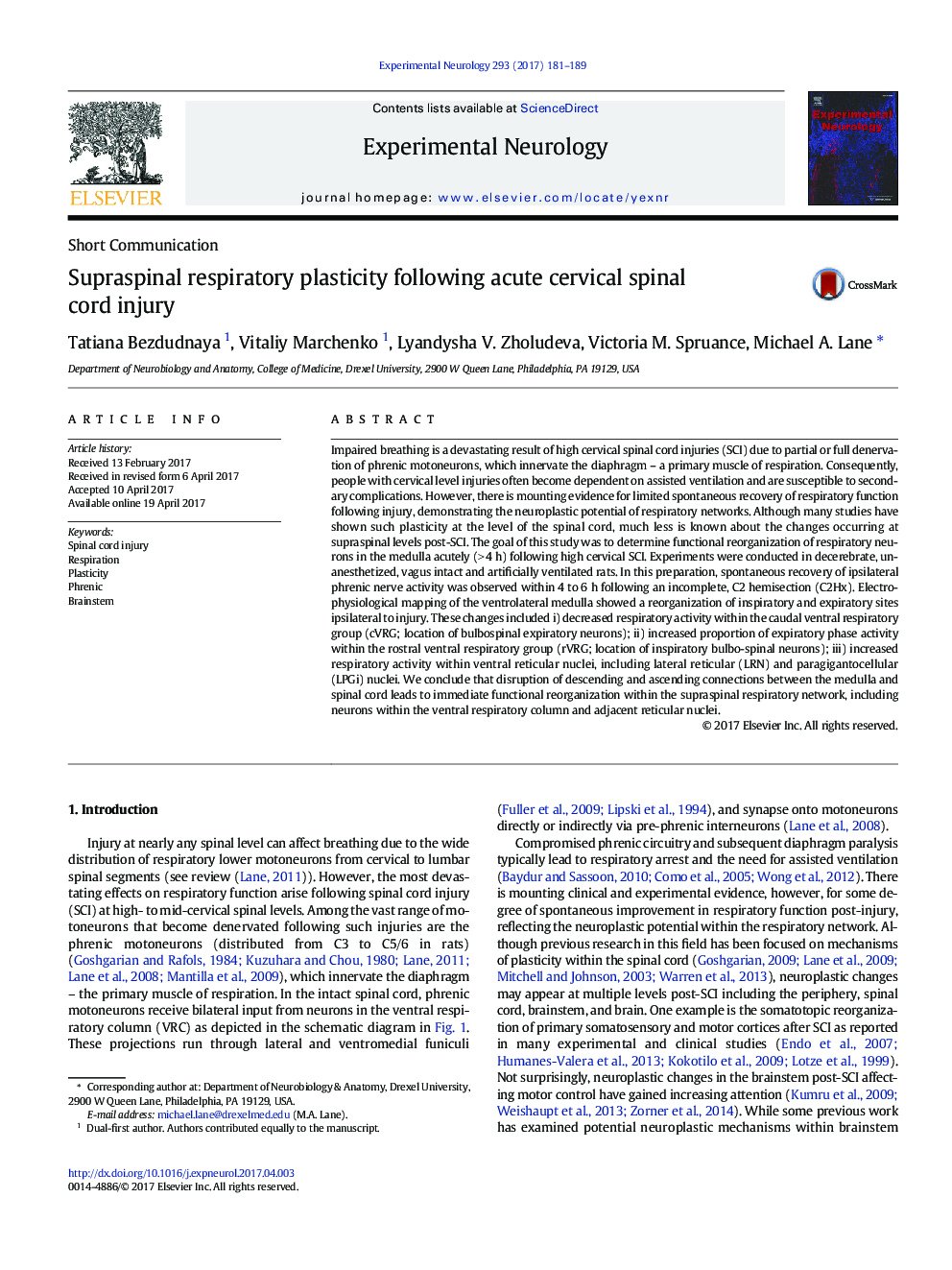| کد مقاله | کد نشریه | سال انتشار | مقاله انگلیسی | نسخه تمام متن |
|---|---|---|---|---|
| 5629280 | 1580146 | 2017 | 9 صفحه PDF | دانلود رایگان |
- Phrenic motor output recovers acutely following incomplete C2Hx
- Neuroplastic reorganization of respiratory activity occurs acutely within the supraspinal respiratory network post-SCI
- Reticular neurons exhibit phasic respiratory-related activity that is increased following cervical SCI
Impaired breathing is a devastating result of high cervical spinal cord injuries (SCI) due to partial or full denervation of phrenic motoneurons, which innervate the diaphragm - a primary muscle of respiration. Consequently, people with cervical level injuries often become dependent on assisted ventilation and are susceptible to secondary complications. However, there is mounting evidence for limited spontaneous recovery of respiratory function following injury, demonstrating the neuroplastic potential of respiratory networks. Although many studies have shown such plasticity at the level of the spinal cord, much less is known about the changes occurring at supraspinal levels post-SCI. The goal of this study was to determine functional reorganization of respiratory neurons in the medulla acutely (>Â 4Â h) following high cervical SCI. Experiments were conducted in decerebrate, unanesthetized, vagus intact and artificially ventilated rats. In this preparation, spontaneous recovery of ipsilateral phrenic nerve activity was observed within 4 to 6Â h following an incomplete, C2 hemisection (C2Hx). Electrophysiological mapping of the ventrolateral medulla showed a reorganization of inspiratory and expiratory sites ipsilateral to injury. These changes included i) decreased respiratory activity within the caudal ventral respiratory group (cVRG; location of bulbospinal expiratory neurons); ii) increased proportion of expiratory phase activity within the rostral ventral respiratory group (rVRG; location of inspiratory bulbo-spinal neurons); iii) increased respiratory activity within ventral reticular nuclei, including lateral reticular (LRN) and paragigantocellular (LPGi) nuclei. We conclude that disruption of descending and ascending connections between the medulla and spinal cord leads to immediate functional reorganization within the supraspinal respiratory network, including neurons within the ventral respiratory column and adjacent reticular nuclei.
Journal: Experimental Neurology - Volume 293, July 2017, Pages 181-189
